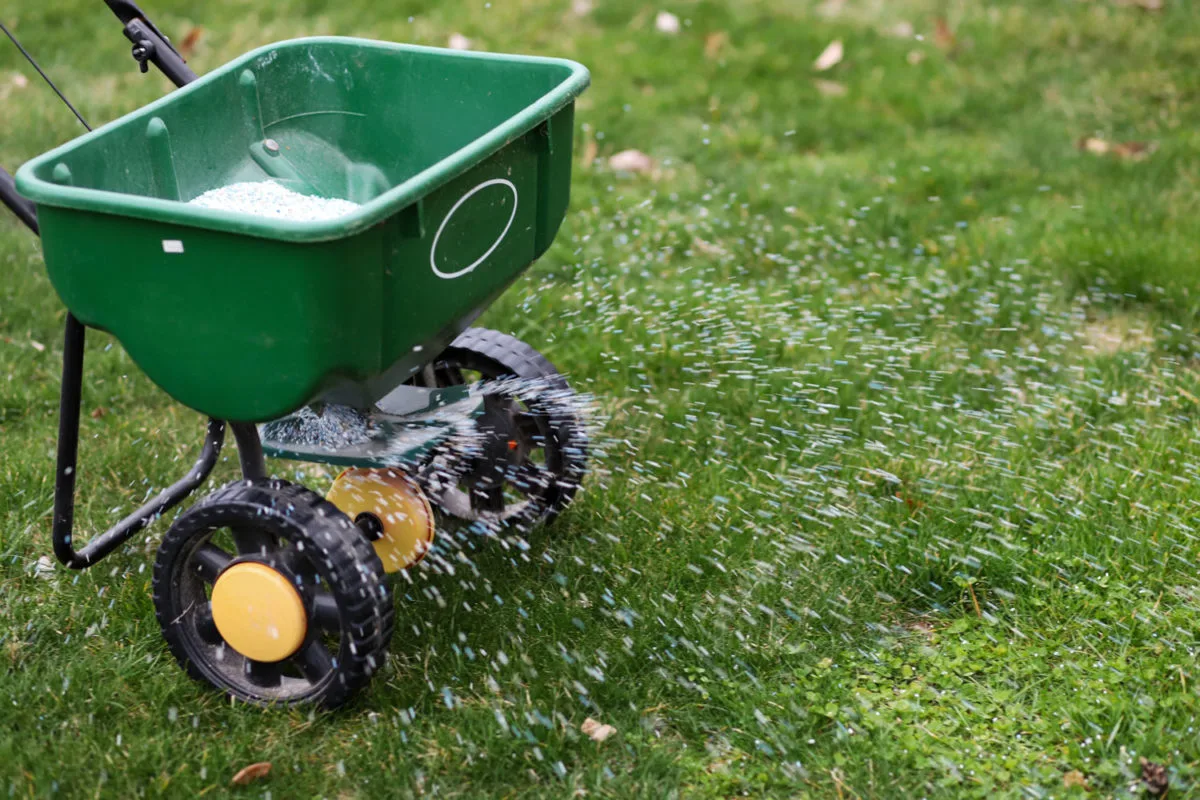Clover is a remarkable plant, but does it belong in our lawns? Here’s the lowdown on clover in lawns.
My YouTube viewers often ask about clover in lawns, so here’s a blog to help you decide whether you will embrace this wonderful plant and enjoy everything it has to offer. Or whether your lawn should be completely free of broadleaved plants.
Identifying Clover In Your Lawn

Red and white clover flower and foliage.
Clover is a fairly distinctive plant and it’s not difficult to spot if it appears in your lawn. The scientific name for this beauty is Trifolium. ‘Tri’ means three and ‘folium’ means leaves, therefore Trifolium means three leaves. And that’s exactly what you see on clover plants. Each leaf has three lobes and I’m led to believe that the distinctive shape was the origin of the ‘clubs’ suit in a pack of playing cards.
The flowers are globe shaped with lots of little florets on each bloom. They’re an absolute magnet for bees because they are full of nectar and have high protein pollen. Which, apparently, is brilliant food for bee larvae.
There is more than one type of clover. Trifolium repens has white flowers, Trifolium pratense has red or pink flowers, Trifolim arvense, the hare’s foot trefoil is a delightful little plant with fluffy flowers and Trifolium dubium, yellow suckling clover has – yes, you guessed it, yellow blooms.
Most clovers are fairly low growing and tolerate mowing well. Agricultural variants however, can grow almost knee high and are quite vigorous.
Clover is a member of the legume plant family. Along with peas, beans and vetches. All of the plants in that family have a remarkable ability to enrich the soil they are growing in by fixing nitrogen from the air. That makes them very valuable and very useful plants to have as part of a crop rotation.
10 Good Things About Clover In Lawns

- Clover captures nitrogen from the air and fixes it into the soil where it becomes plant food.
- Flowers are very bee friendly and an important food source for bumblebees.
- Tolerates mowing well.
- Stays green all year round – even in a dry summer
- All parts of the plant that you see above ground are edible…the leaves are not necessarily delicious but the flowers taste of honey.
- Needs very little in the way of fertiliser or irrigation.
- Outcompetes other weeds.
- Rabbits love clover and apparently if there’s enough of it available they’ll munch on that instead of raiding your veg patch…..I haven’t tested that theory so proceed with caution!
- Usually low growing and ideal for a relaxed mowing regime or a species rich lawn.
- Visually very attractive.
Why Does Clover Grow In Lawns?
In my last blog (A beginners guide to getting rid of lawn weeds) I talked about Mother Nature’s dislike of monocultures. Whatever you are trying to grow, be it carrots, dahlias, apple trees or a lawn, you’ll find that other plant species pop up around them without you doing anything. Clover in lawns is no different.
Just like moss, clover will identify a weakness in your lawn and the soil beneath it, and it will immediately take advantage of the opportunity.
As a legume – a nitrogen fixing plant – clover is particularly attracted to soils with low fertility. It’s nature’s way of balancing things up by fixing nitrogen into the soil and helping to feed neighbouring plants. So, if the soil beneath your lawn is depleted in nutrients, you are more likely to see clover appearing in the sward.

Clover will happily outcompete lawn grasses if the conditions are right. This makes for a lovely low maintenance lawn, but whether or not it’s right for your garden is down to personal taste
How To Get Rid Of Clover In Lawns
Clover is great in lawns, but if it’s not for you, that’s OK too. So, what is the best way to remove it?
My first choice for getting rid of unwanted plants in the lawn is to dig them out. There’s no chemicals, no damage to the environment and, provided there are only a few of them, it’s quick. Remove the clover and make a quick repair with some topsoil mixed with grass seed. Job done.
If your lawn is heavily infested with clover you might want to try a selective herbicide. Clover however, hasn’t become the successful plant that it is, by succumbing to weedkillers. It’s quite resistant to some herbicides, so do your homework carefully before buying any sprays or treatments. I’m not going to mention any brands – simply because product availability changes fast and you might be reading this blog in the future. However, a good place to ask questions is the Premier Lawns Community page on Facebook.
A really good, environmentally friendly way to get rid of any weed from your lawn is to cover the weed with something light-proof and literally, keep it in the dark until it dies. So a piece of black plastic, thick cardboard or wood, weighted down and left for a couple of weeks should sort it. It’s not a visually attractive solutions and it will kill any grass that is covered up – but it’s a solution just the same.

A regular lawn feeding regime will help to keep clover at bay
Keeping Clover Out Of Your Lawn
Once you have got rid of clover in your lawn, you can tweak your lawn care regime so that your lawn becomes a no-go area for this particular invader.
Start with feeding your lawn. Clover prefers low fertility soil so regularly applying the right lawn feed for the time of year will make the area less attractive to this plant species.
Raise the height of the cut. Maintaining your lawn at around 4-8cm long will help the grass to thrive and outcompete unwanted plants.
Hold back on irrigation. Established lawns really don’t need too much water. Many plant nutrients dissolve in water and are easily washed away. The more you water your lawn, the more chance there is of reducing soil fertility and creating the conditions that clover loves. Please don’t let new lawns dry out though.
Dig out clover plants as soon as you see them, don’t let them get a foot hold in your lawn.
More Tips On Controlling Unwanted Plants In Your Lawn
Beginners guide to getting rid of lawn weeds.
The best way to get rid of moss
Your complete lawn care calendar – a month by month guide to caring for your lawn.
